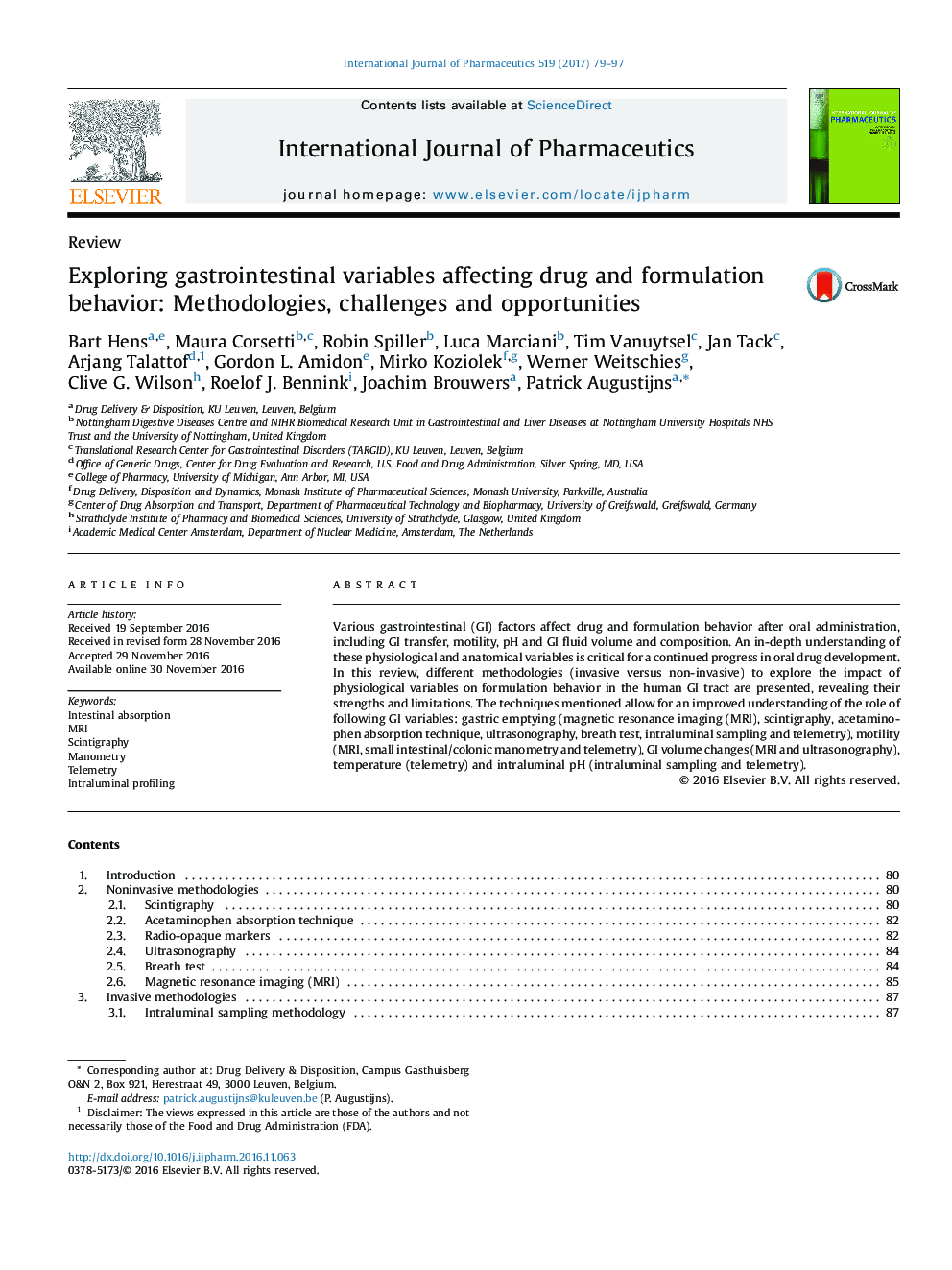| Article ID | Journal | Published Year | Pages | File Type |
|---|---|---|---|---|
| 5550675 | International Journal of Pharmaceutics | 2017 | 19 Pages |
Various gastrointestinal (GI) factors affect drug and formulation behavior after oral administration, including GI transfer, motility, pH and GI fluid volume and composition. An in-depth understanding of these physiological and anatomical variables is critical for a continued progress in oral drug development. In this review, different methodologies (invasive versus non-invasive) to explore the impact of physiological variables on formulation behavior in the human GI tract are presented, revealing their strengths and limitations. The techniques mentioned allow for an improved understanding of the role of following GI variables: gastric emptying (magnetic resonance imaging (MRI), scintigraphy, acetaminophen absorption technique, ultrasonography, breath test, intraluminal sampling and telemetry), motility (MRI, small intestinal/colonic manometry and telemetry), GI volume changes (MRI and ultrasonography), temperature (telemetry) and intraluminal pH (intraluminal sampling and telemetry).
Graphical abstractDownload high-res image (174KB)Download full-size image
